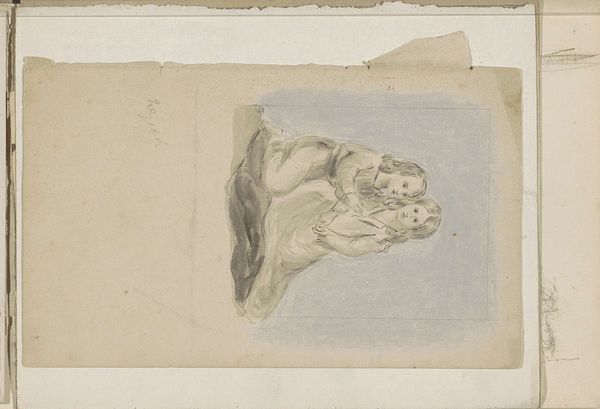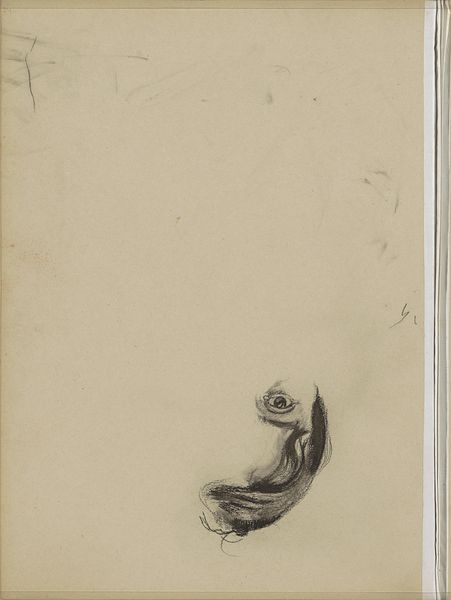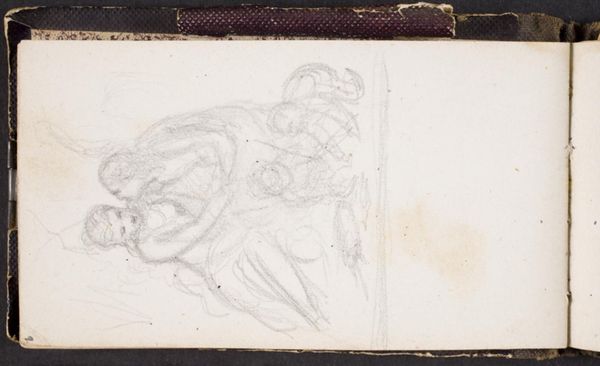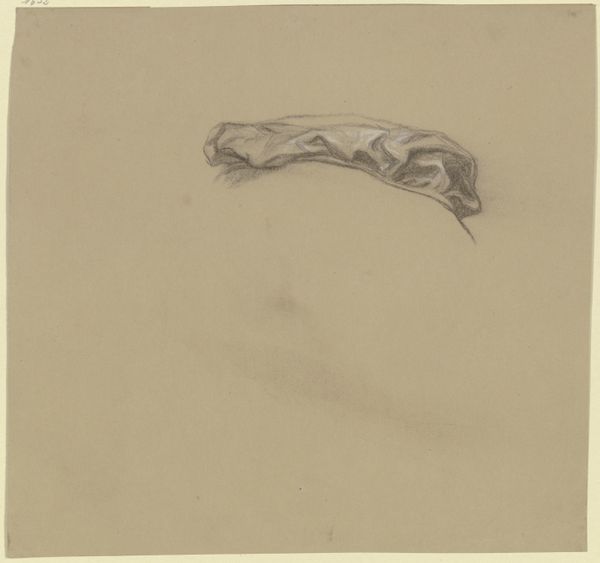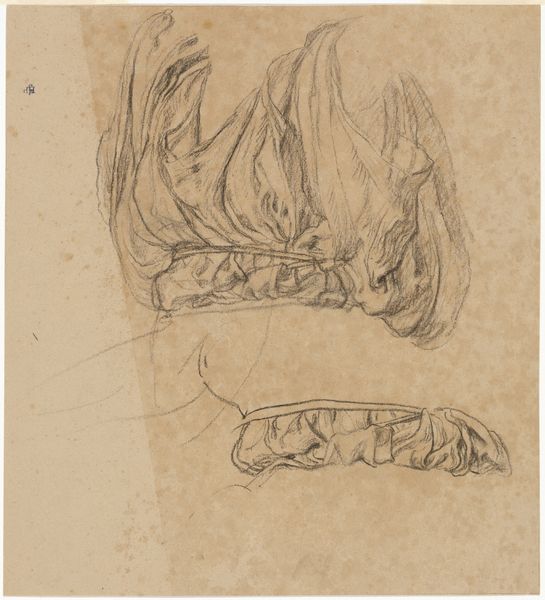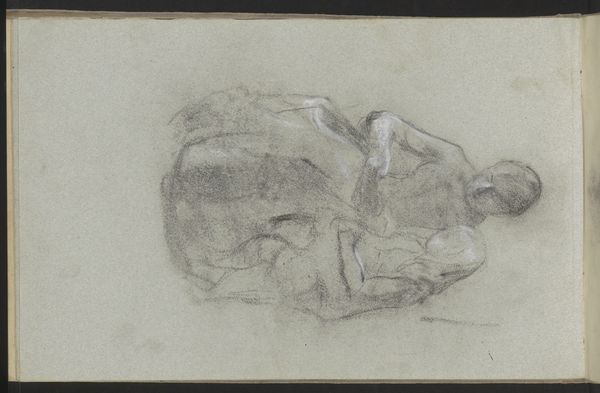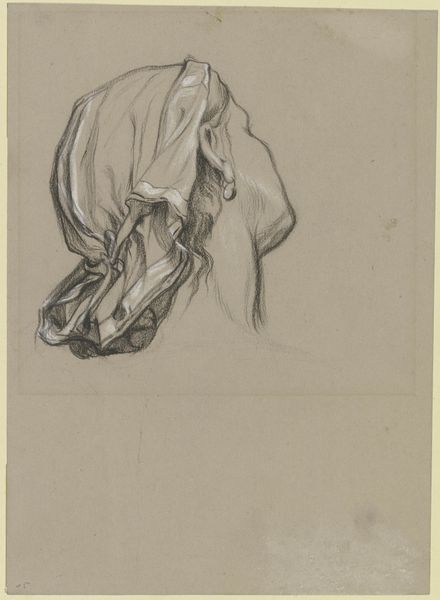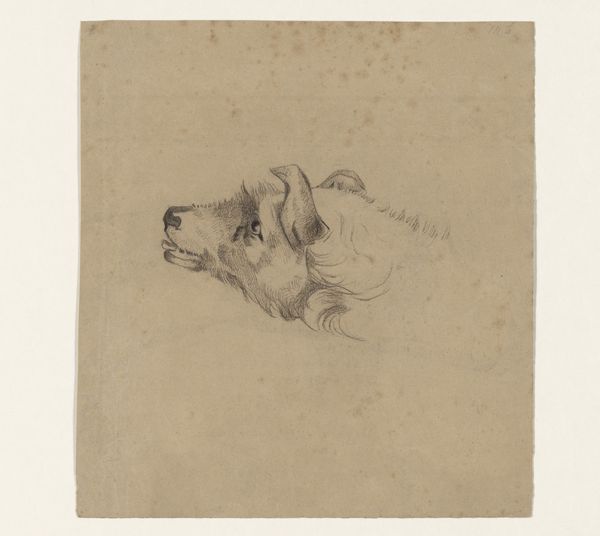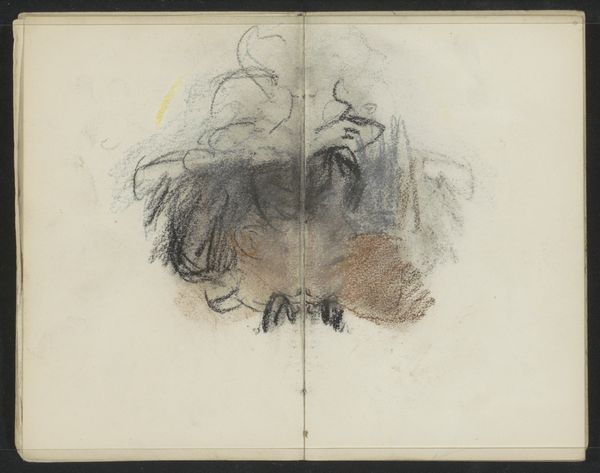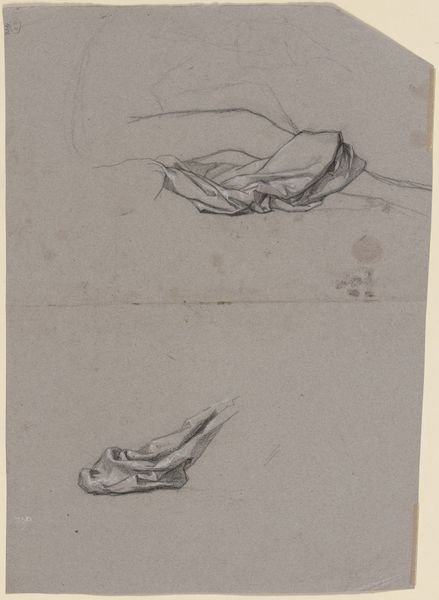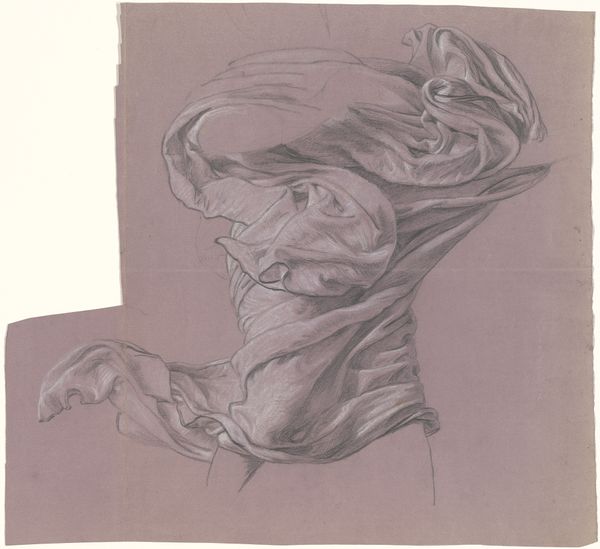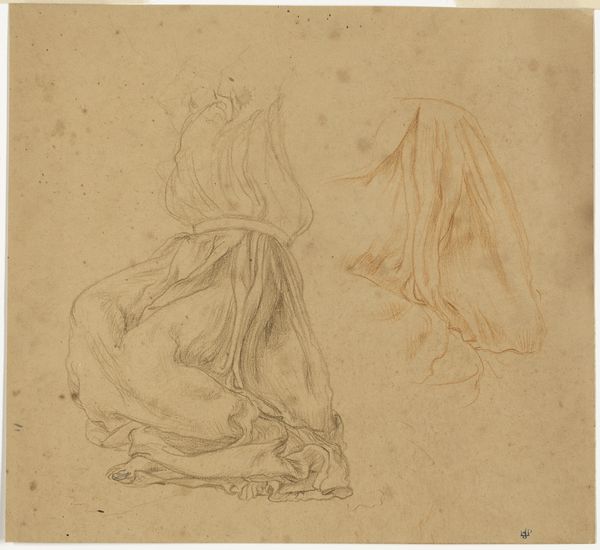
drawing
#
pencil drawn
#
drawing
#
toned paper
#
light pencil work
#
pencil sketch
#
pencil drawing
#
underpainting
#
watercolour bleed
#
watercolour illustration
#
remaining negative space
#
watercolor
Dimensions: 598 mm (height) x 478 mm (width) (bladmaal)
Curator: Oluf Hartmann’s "Draperistudie," created between 1879 and 1910, offers a captivating glimpse into fabric’s form through pencil on toned paper. Editor: There’s a quiet drama in the sketch—a still life, perhaps, yet the shading lends the cloth a presence that is almost animated, poised between chaos and serenity. Curator: Quite so. Hartmann manipulates line and shadow expertly. Note the strategic use of hatching and cross-hatching that grants a sculptural dimension to the folds, which speaks to academic training emphasizing the play of light on surfaces. Editor: From a broader view, the Danish art scene during this period witnessed a burgeoning interest in Realism and naturalism, reacting against the rigidity of previous academic styles. Does this study represent a push towards emphasizing ordinary, everyday objects and figures rather than grand historical subjects? Curator: Precisely. The choice of drapery – mere fabric – mirrors the period’s exploration of intrinsic beauty found in commonplace subjects, elevated by skilled execution. Moreover, it offered students accessible avenues for formal exploration: observing light, shadow, texture— Editor: I wonder about its exhibition context. Was this purely academic? Did studies like these, with their clear formal explorations, enter a broader artistic dialogue beyond the classroom? How were they valued within emerging artistic circles? Curator: Research shows that many were not explicitly showcased but used within ateliers or even resold to other studios. The drawing served dual roles as artistic training and an aesthetic object. This practice illustrates much about art's function during industrialization; reproducible and often re-usable as teaching samples. Editor: So, these were both stepping stones and artifacts. The sketch embodies transitional purposes, simultaneously fulfilling academic goals and hinting towards new aesthetic territories within modernizing Europe. I find this notion especially profound here. Curator: Ultimately, viewing “Draperistudie" offers us a special dual appreciation: firstly regarding observational artistic skill, secondly considering evolving ideas of representation when art transitioned into modernity.
Comments
No comments
Be the first to comment and join the conversation on the ultimate creative platform.
